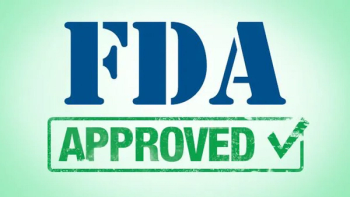
- March 2017
- Volume 12
- Issue 2
Attitude Shift: Making Safe Handling of Hazardous Drugs a Priority
Despite the warnings, adherence to safe handling precautions by healthcare practitioners is uneven; understanding the risks are essential.
Concern about safe handling of hazardous drugs (HDs) now goes back more than a generation to the 1970s. Several chemotherapy agents were linked to secondary malignancies in treated patients, and astute clinicians suspected that healthcare workers (HCWs) might also be at risk. Data demonstrating the harmful effects of occupational chemotherapy exposure soon followed, all of which pointed to the need for protecting pharmacists and nurses.
Despite agreement among key stakeholders who support HCW safety when handling HDs, (Occupational Safety and Health Administration [OSHA]1National Institute for Occupational Safety and Health [NIOSH],2 American Society of Health System Pharmacists,3 and Oncology Nursing Society,4 there remains considerable variation in the use of safety precautions. Two of the most common misconceptions about HD exposure and HD precaution are (1) the chance of being exposed is small, and (2) there is no evidence to support all the recommended precautions.
MULTIPLE ROUTES OF EXPOSURE
Most oncology nurses accept the fact that HDs are harmful, and that exposure should be avoided.5 Yet, what some clinicians fail to recognize is that they are potentially exposed when performing routine handling activities or that they might be personally vulnerable to the adverse effects of exposure. Recent studies6-10 indicate nurses’ HD exposure is frequent enough to warrant concern (Table 1).
Many studies have detected HD residue on surfaces in healthcare settings,11-14 making exposure highly probable15 if nurses touch them without wearing personal protective equipment (PPE). Such contamination can occur from small leaks or from the transfer of HD residue from the outside of drug containers or gloves. The occurrence of environmental contamination has not improved significantly in the last 10 years.16,17 Some now consider this “invisible” contamination one of the most common sources of HCW exposure.
Several studies using biological monitoring documented the occurrence of occupational exposure by measuring HD residue in urine8,13,18,19 and genotoxic changes in peripheral lymphocytes of HCWs.20-23 A recent meta-analysis confirmed the overall effect of genotoxic damage as a result of occupational HD exposure.24 Whereas the magnitude of occupational exposure is likely small, the frequent, low-level exposure has potential adverse effects.
EVIDENCE SUPPORTING PRECAUTIONS
The HD safe handling precautions recommended in the 1980s were based on the best evidence available at the time. More than 30 years later, ample data exist to support biological safety cabinets (BSCs), closed system transfer devices (CSTDs), PPE, and a comprehensive safe handling program.25
BSCs and other types of ventilated cabinets are engineering controls designed for the purpose of protecting workers by preventing HDs from escaping into the work environment during drug preparation. Two examples of studies demonstrate the protective nature of BSCs. HCWs who do not use BSCs are exposed when compared to those who used them as evidenced by DNA damage.26 When BSCs malfunction, they have been associated with exposure.27
CSTDs are supplemental engineering controls. CSTDs are not used as commonly as other HD precautions, yet they represent the only engineering control available for HD administration. There are multiple studies demonstrating reduced surface contamination, which is a source of HCW exposure,19,28,29 as well as a decrease in actual HCW exposure.19
PPE—both gowns and gloves—dash;provide barrier protection for HCWs when handling HDs. There are studies that demonstrate decreased worker exposure when PPE is worn compared with no PPE.26 In addition, contamination found on the outside of gowns and/or gloves would have resulted in worker exposure had they not been wearing PPE.30,31
Evidence exists to support the effectiveness of comprehensive safe handling programs for HD exposure control measures.32-34 Such programs address all aspects of HD handling, since combining strategies is more likely to result in worker safety (Table 2).
BARRIERS TO SAFE HANDLING
NIOSH15 endorsed double-gloving, chemotherapy-tested gowns and external venting of BSCs in 2004 . These recommendations appeared in the OSHA guidelines in the 1990s,35 although many considered these “suggestions,” and therefore optional.CSTDs are the only novel tools for safe handling of HDs, and the oldest of these has more than 15 years of data to support their use.
Because few recommendations for HD safe handling are new, it is unlikely that the inconsistent use of precautions is due to lack of awareness. Barriers to safe handling precautions do exist (Box).
Although some barriers are out of the control of HCWs and rest in the hands of facility leaders, others are due to perceptions and misconceptions of individuals. Attitudes about the low risk of exposure and the remote health effects may contribute to failure to use precautions
Barriers to Safe Handling
• Lack of availability of chemotherapy-tested PPE
• Discomfort from wearing PPE
• Not being convinced of the need for PPE5,10
• Concern that patients will be scared or worried when staff wear PPE5
• Cost of safety equipment6,25
PPE = personal protective equipment
Believing that PPE use is a “personal choice” is not harmless. Novice nurses learn from experienced nurses they respect. By modeling unsafe behavior, nurses send a message that exposure is not serious.
Because behavior change is related as much to attitudes and beliefs as it is to knowledge and skills, HD safety education must identify and address the affective domain. There should be a balance between fear and respect for those who are concerned about exposure. Because HD exposure and its potential for harm is not a matter of faith (ie, “I don’t believe it”), but one of toxicology, nurses must accept their personal susceptibility and value the precautions that are available.
References
1. US Department of Labor. Occupational Safety and Health Administration. Controlling Occupational Exposure to Hazardous Drugs.
2. Centers for Disease Control and Prevention. The National Institute for Occupational Safety and Health. NIOSH List of Antineoplastic and Other Hazardous Drugs in Healthcare Settings, 2016.
3. American Society of Health-System Pharmacists. ASHP Guidelines on Handling Hazardous Drugs. Am J Health-Syst Pharm. 2006;63(12):1172-1193.
4. Polovich M, Olsen M, LeFebvre KB, eds. Chemotherapy and Biotherapy Guidelines and Recommendations for Practice. 4th ed. 2014; Oncology Nursing Society: Pittsburgh, PA.
5. Polovich M, Clark PC. Factors influencing oncology nurses' use of hazardous drug safe-handling precautions. Oncol Nurs Forum. 2012;39(3):E299-E309.
6. Boiano JM, Steege AL, Sweeney MH. Adherence to precautionary guidelines for compounding antineoplastic drugs: a survey of nurses and pharmacy practitioners. J Occup Environ Hyg. 2015;12(9):588-602.
7. Boiano JM, Steege AL, Sweeney MH. Adherence to safe handling guidelines by healthcare workers who administer antineoplastic drugs. J Occup Environ Hyg. 2014;11(11):728-740.
8. Friese CR, McArdle C, Zhao T. Antineoplastic drug exposure in an ambulatory setting: a pilot study. Cancer Nurs. 2014;38(2):111-117.
9. Friese CR, Himes-Ferris L, Frasier MN, et al. Structures and processes of care in ambulatory oncology settings and nurse-reported exposure to chemotherapy. BMJ Qual Saf. 2012;21(9):753-759.
10. He B, Mendelsohn-Victor K, McCullagh MC, Friese CR. Personal protective equipment use and hazardous drug spills among ambulatory oncology nurses. Oncol Nurs Forum. 2017;44(1):60-65.
11. Berruyer M, Tanguay C, Caron NJ, et al. Multicenter study of environmental contamination with antineoplastic drugs in 36 Canadian hospitals: a 2013 follow-up study. J Occup Environ Hyg. 2015;12(2):87-94.
12. Bussieres JF, Tanguay C, Touzin K, et al., Environmental contamination with hazardous drugs in Quebec hospitals. Can J Hosp Pharm. 2012;65(6):428-435.
13. Connor TH, DeBord DG, Pretty JR, et al., Evaluation of antineoplastic drug exposure of health care workers at three university-based US cancer centers. J Occup Environ Med. 2010;52(10):1019-1027.
14. Ladeira C, Viegas S, Padua M, et al. Assessment of genotoxic effects in nurses handling cytostatic drugs. J Toxicol Environ Health. 2014;77(14-16):879-887.
15. Centers for Disease Control and Prevention. The National Institute for Occupational Safety and Health. NIOSH Alert: Preventing Occupational Exposures to Antineoplastic and Other Hazardous Drugs in Health Care Settings.
16. Connor T, DeBord DG, Pretty J. Evaluation of antineoplastic drug exposure of health care workers at three university-based US cancer centers. J Occup Environ Med. 2010;52(10):1019-1027
17. Connor TH, Anderson RW, Sessink PJ, et al., Surface contamination with antineoplastic agents in six cancer treatment centers in Canada and the United States. Am J Health Syst Pharm. 1999;56(14):1427-1432.
18. Hon CY, Teschke K, Shen H, et al. Antineoplastic drug contamination in the urine of Canadian healthcare workers. Int Arch Occup Environ Health. 2015;88(7):933-941.
19. Miyake T, Iwamoto T, Tanimura M, Okuda M. Impact of closed-system drug transfer device on exposure of environment and healthcare provider to cyclophophamide in Japanese hospital. Springerplus. 2013;2(1):273.
20. Bouraoui S, Brahem A, Tabka F, et al. Assessment of chromosomal aberrations, micronuclei and proliferation rate index in peripheral lymphocytes from Tunisian nurses handling cytotoxic drugs. Environ Toxicol Pharmacol. 2011;31(1):250-257.
21. McDiarmid MA, Olier MS, Roth TS, et al. Chromosome 5 and 7 abnormalities in oncology personnel handling anticancer drugs. J Occup Environ Med. 2010;52(10):1028-1034.
22. McDiarmid MA, Rogers B, Oliver MS. Chromosomal effects of non-alkylating drug exposure in oncology personnel. Environ Mol Mutagen. 2014;55(4):369-374.
23. Moretti M, Grollino MG, Pavanello S, et al. Micronuclei and chromosome aberrations in subjects occupationally exposed to antineoplastic drugs: a multicentric approach. Int Arch Occup Environ Health. 2015;88(6):683-695.
24. Villarini M, Gianfredi V, Levorato S, et al., Occupational exposure to cytostatic/antineoplastic drugs and cytogenetic damage measured using the lymphocyte cytokinesis-block micronucleus assay: a systematic review of the literature and meta-analysis. Mutat Res. 2016;770(Pt A):35-45.
25. Crickman R, Finnell D. Systematic review of control measures to reduce hazardous drug exposure for health care workers. J Nurs Care Qual. 2016;31(2):183-190.
26. Fuchs J, Hengstler JG, Jung D, et al. DNA damage in nurses handling antineoplastic agents. Mutational Res. 1995;342(1-2):17-23.
27. Kevekordes S, Gebel TW, Hellwig M, et al., Human effect monitoring in cases of occupational exposure to antineoplastic drugs: a method comparison. Occup Environ Med. 1998;55(3):145-149.
28. Clark BA, Sessink P. Use of a closed system drug-transfer device eliminates surface contamination with antineoplastic agents. J Oncol Pharm Pract. 2013;19(2):99-104.
29. Favier B, Labrosse H, Gilles-Afchain L, et al. The PhaSeal system: Impact of its use on workplace contamination and duration of chemotherapy preparation. J Oncol Pharm Pract. 2011;18(1):37-45.
30. Fransman W, Vermeulen R, Kromhout H. Dermal exposure to cyclophosphamide in hospitals during preparation, nursing and cleaning activities. Int Arch Occup Environ Health. 2005;78(5):403-412.
31. Sottani C, Porro B, Imbriani M, Minola C. Occupational exposure to antineoplastic drugs in four Italian health care settings. Toxicol Letters. 2012;213(1):107-115.
32. Keat CH, et al. Improving safety-related knowledge, attitude, and practices of nurses handling cytotoxic anticancer drugs: pharmacists' experience in a general hospital, Malaysia. Asian Pac J Cancer Prev. 2013;14(1):69-73.
33. Sproll B, Milan H, Caligiuri C, et al. Development and implementation of a regional program for safe handling of hazardous drugs by hospital pharmacies. Can J Hosp Pharm. 2012(65):223-228.
34. Yoshida J, Koda S, Nishida S, et al, Association between occupational exposure and control measures for antineoplastic drugs in a pharmacy of a hospital. Ann Occup Hyg. 2013;57(2):251-60.
35. US Department of Labor. Occupational Safety and Health Administration. Controlling Occupational Exposure to Hazardous Drugs in OSHA Technical Manual; 1999.
Articles in this issue
over 8 years ago
Novel Immunotherapy Under Study in Pancreatic Cancerover 8 years ago
The Shoe Is on the Other Foot When the Nurse Has Cancerover 8 years ago
Brain Trust: Research Accelerated to Improve GBM Survivalover 8 years ago
It's All About Leadership and Teamworkover 8 years ago
Lateral Violence in Nursing Can Take Many Formsover 8 years ago
Can You Navigate Our Horses Out of the Parking Lot?over 8 years ago
Cervical Cancer: New Data on Survivalover 8 years ago
Zero Tolerance: Stopping Nurse Bullying Begins With Leadershipover 8 years ago
Fast Facts for the Frontline: Ostomy CareNewsletter
Knowledge is power. Don’t miss the most recent breakthroughs in cancer care.

















































































